I had always seen this place from afar, with its entrance arch standing out near the mountain, a few years ago there was nothing around it, which made it look more mysterious, but now it is preceded by a housing development. Still, it looks interesting, so recently I finally decided to approach it, and besides taking some pictures, to see what other information I could find out about it, since I didn't find much on the Internet.
Siempre había visto este lugar desde lejos, con su arco de entrada destacando cerca de la montaña, hace unos años no había nada a su alrededor, lo que lo hacía verse más misterioso, pero ahora lo precede una urbanización. Aún así, luce interesante, así que hace poco por fin decidí acercarme, y además de hacer algunas fotos, ver qué otra información averiguaba sobre él, ya que por Internet no encontré mucho.
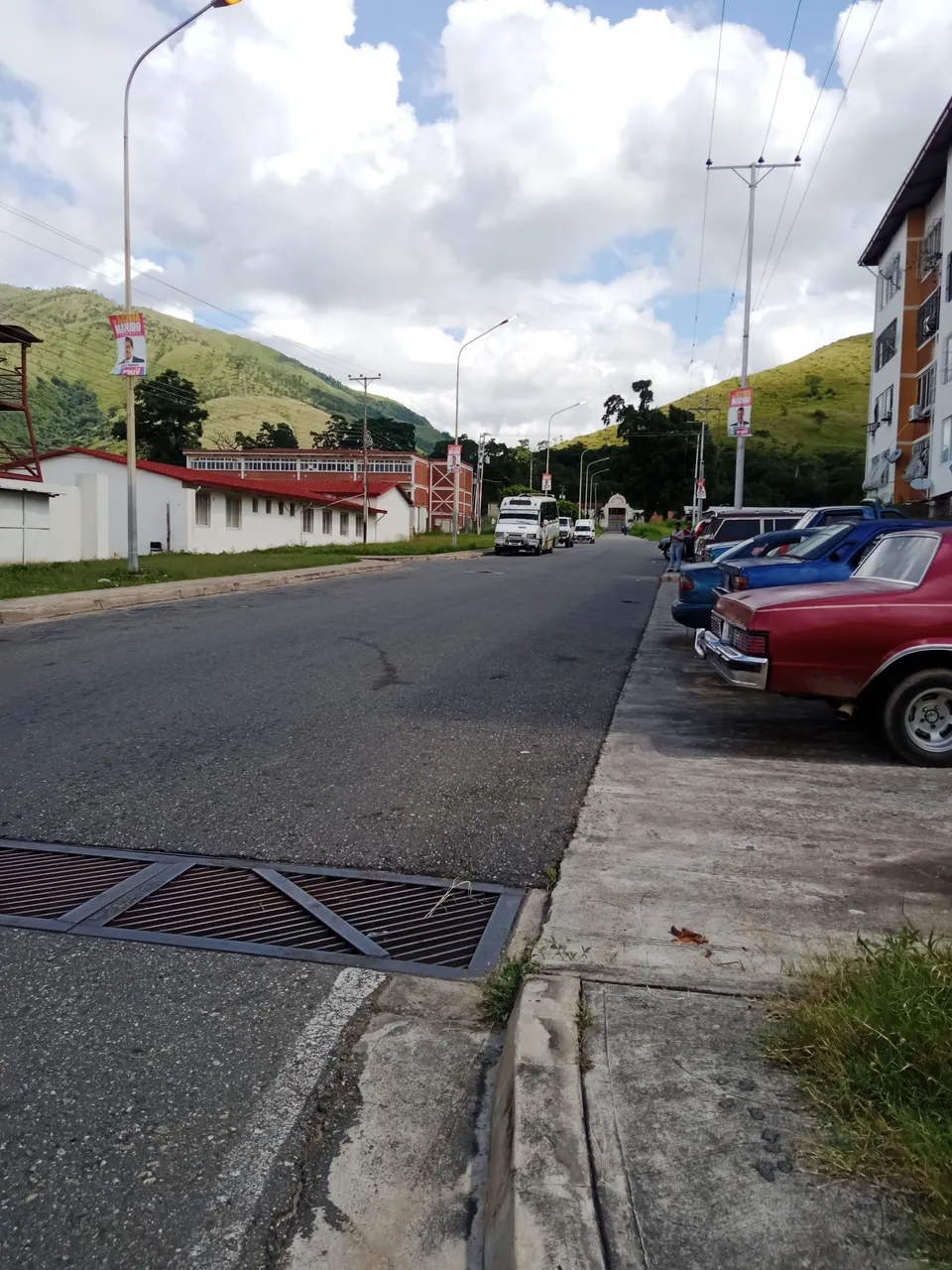
It is the old hacienda La Mora, located in Las Mercedes sector of La Victoria (Aragua State), Venezuela, a place that used to have a huge extension and is now reduced to a large house and some surrounding land. To get there you have to go through the main street of Ciudad Socialista housing development, built 11 years ago on part of what used to be the land of this property.
Se trata de la antigua hacienda La Mora, ubicada en el sector Las Mercedes de La Victoria (estado Aragua), Venezuela, un lugar que antes era de enorme extensión y que actualmente se reduce a una casona y algunas tierras aledañas. Para llegar hasta allá hay que atravesar la calle principal del urbanismo Ciudad Socialista, construido hace 11 años en parte de lo que fue el terreno de esta propiedad.
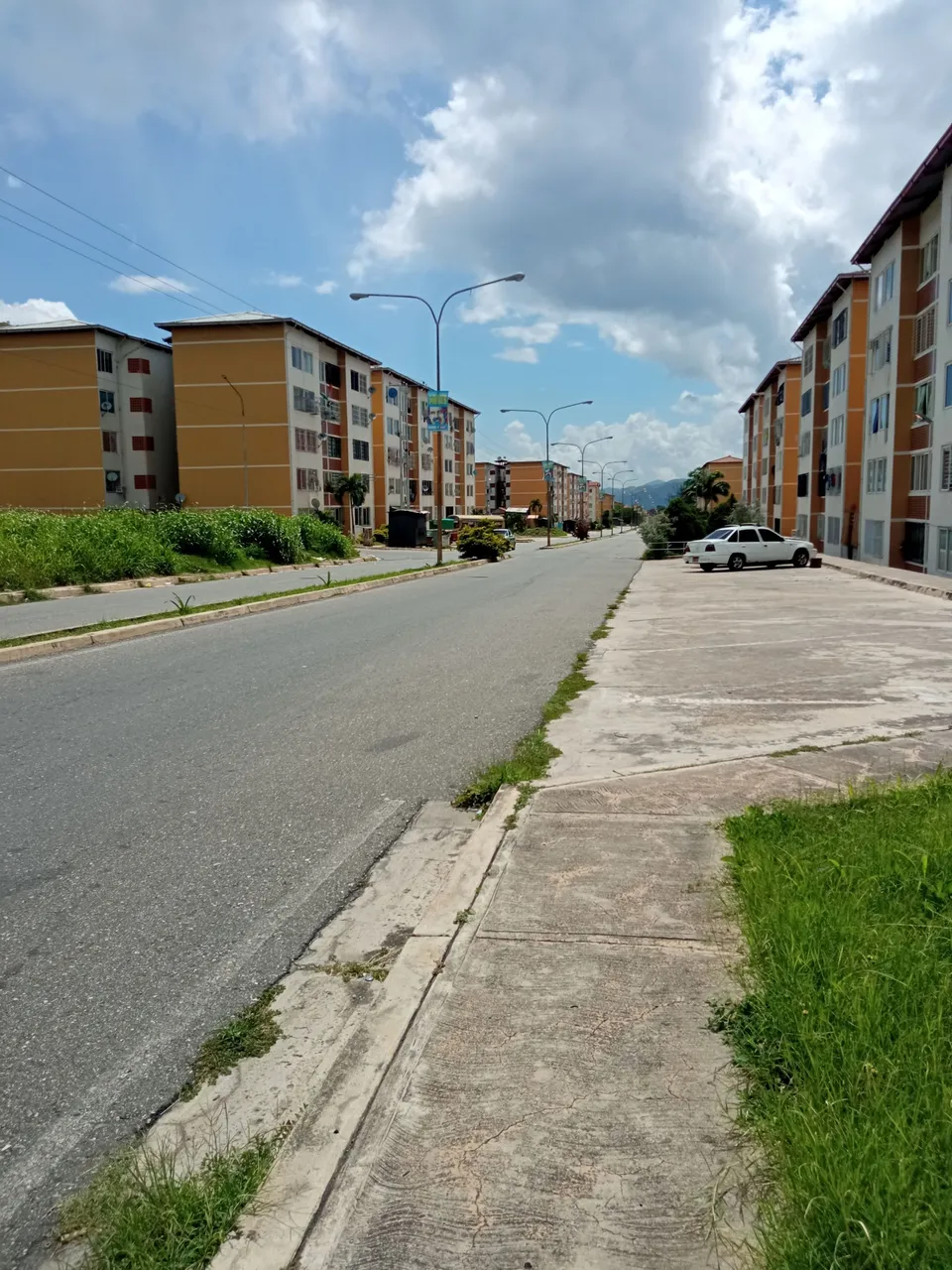
I arrived at about 10:00 in the morning and walked towards the front of the hacienda, its surroundings look quite neglected, and that's why I thought the place was abandoned.
Llegué como a las 10:00 de la mañana y caminé hacia la fachada de la hacienda, sus alrededores se ven bastante descuidados, y por eso pensé que el lugar estaba abandonado.
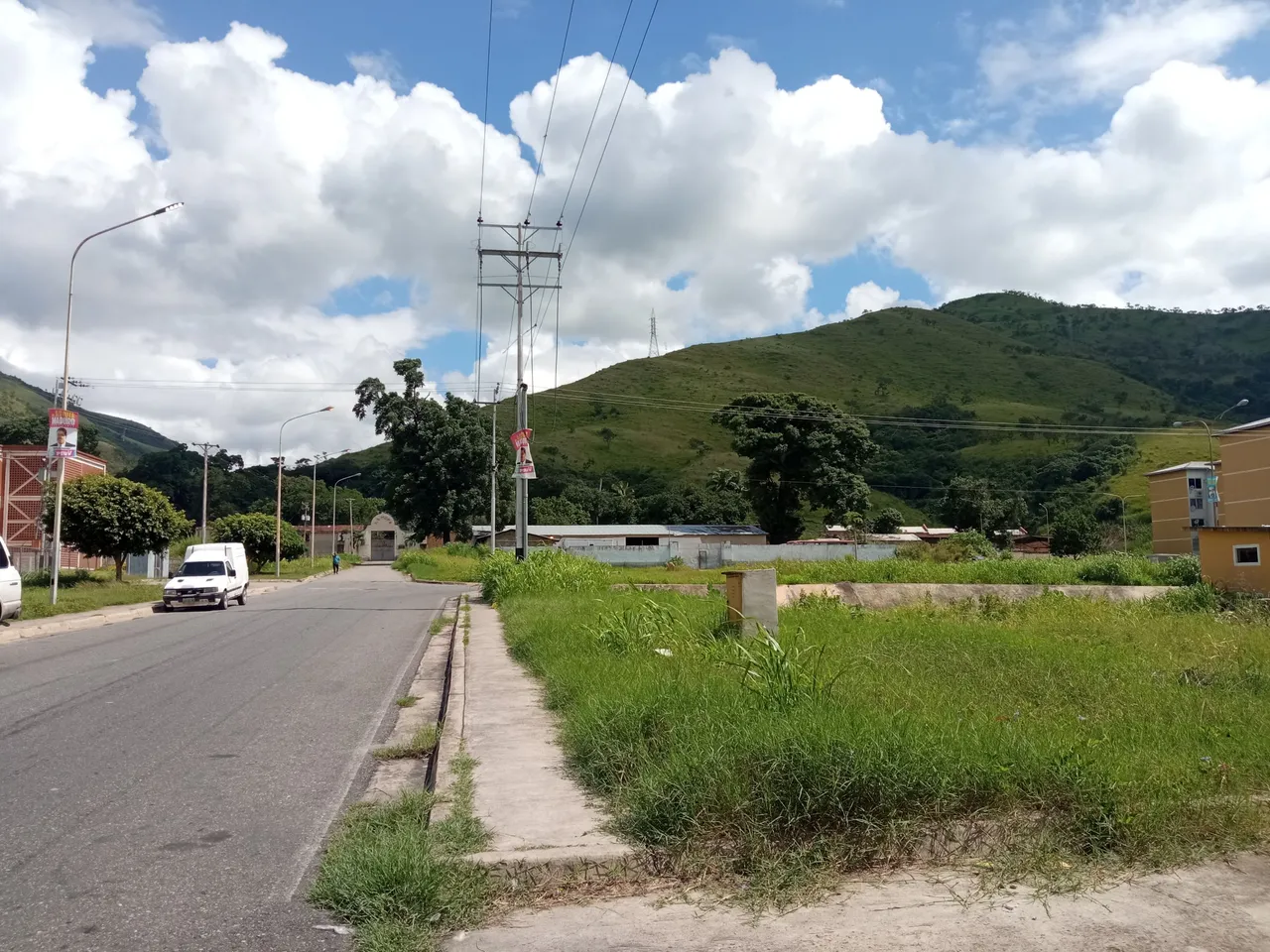
Some people always pass through this road because at the end, on the left hand side, there is a shortcut through the brush to reach other parts of Las Mercedes sector.
Por esta vía pasan siempre algunas personas porque al final, a mano izquierda, hay un atajo entre la maleza para llegar a otras partes del sector Las Mercedes.
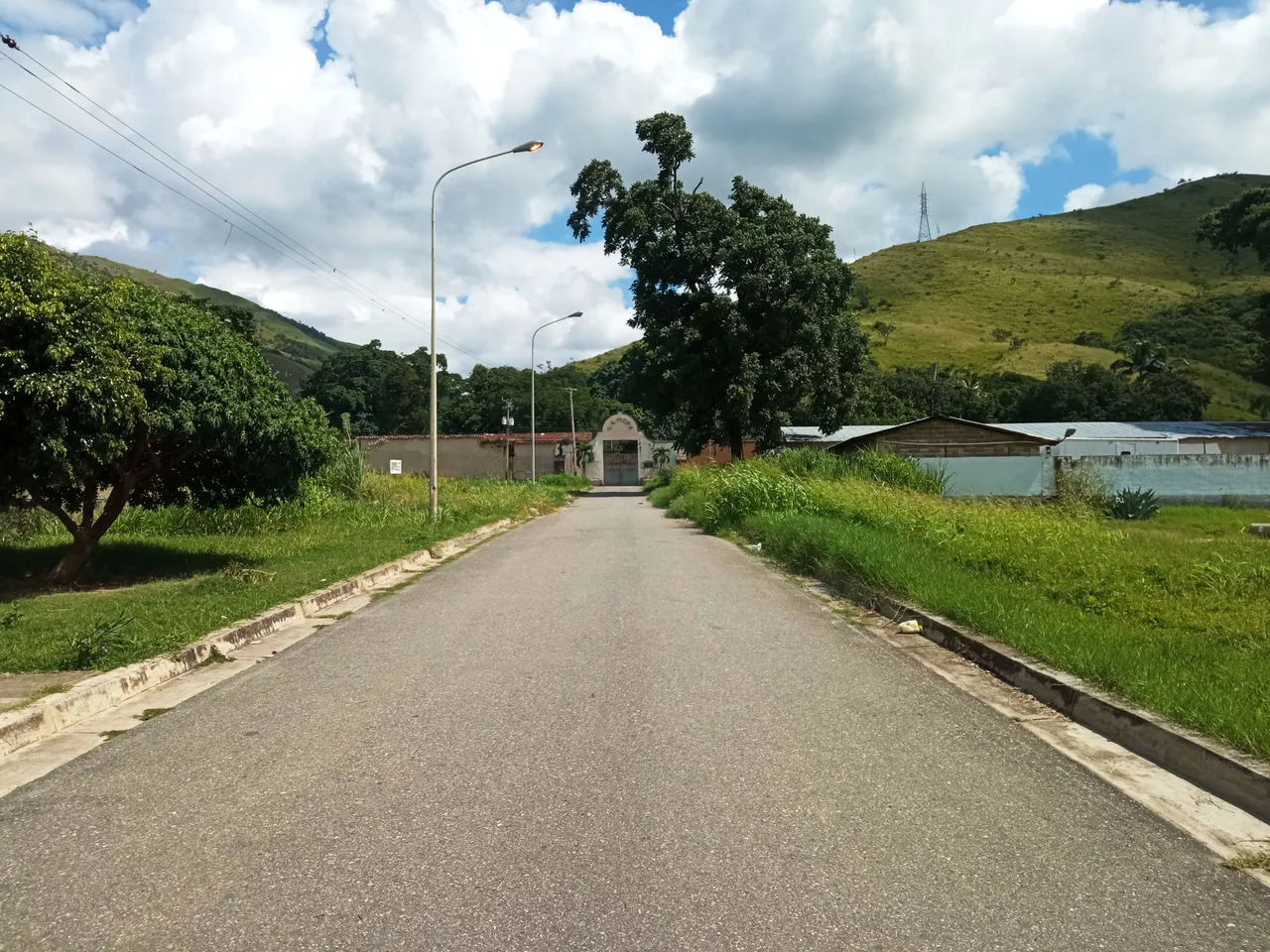
I reached my goal and started to take pictures of the hacienda's facade. Its design shows that it is an old construction, and it is also evident that it has not been maintained for years.
Alcancé mi objetivo y me puse a tomar fotos de la fachada de la hacienda. Por su diseño se nota que es una construcción antigua, y también es evidente que no le han hecho mantenimiento en años.
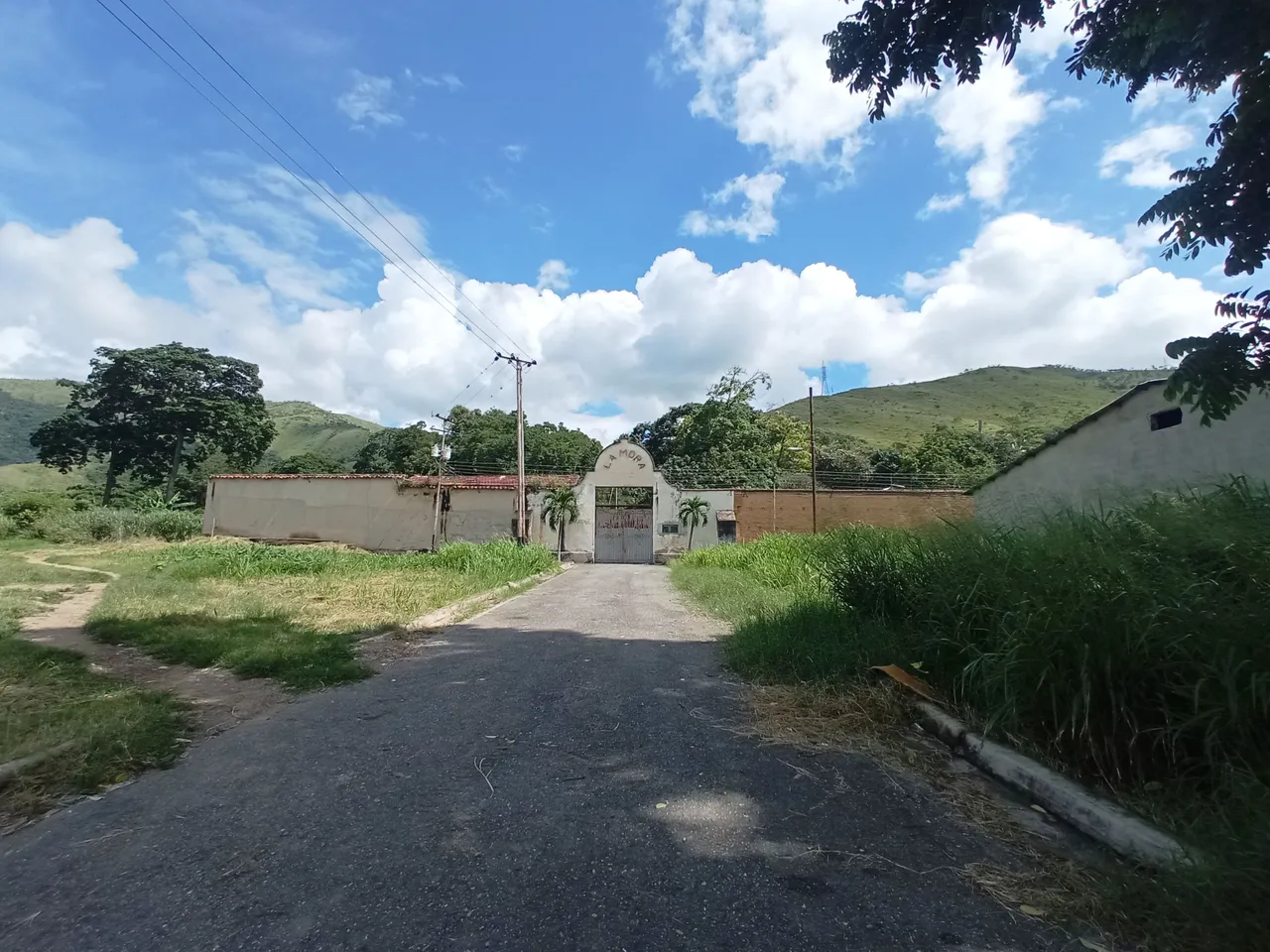
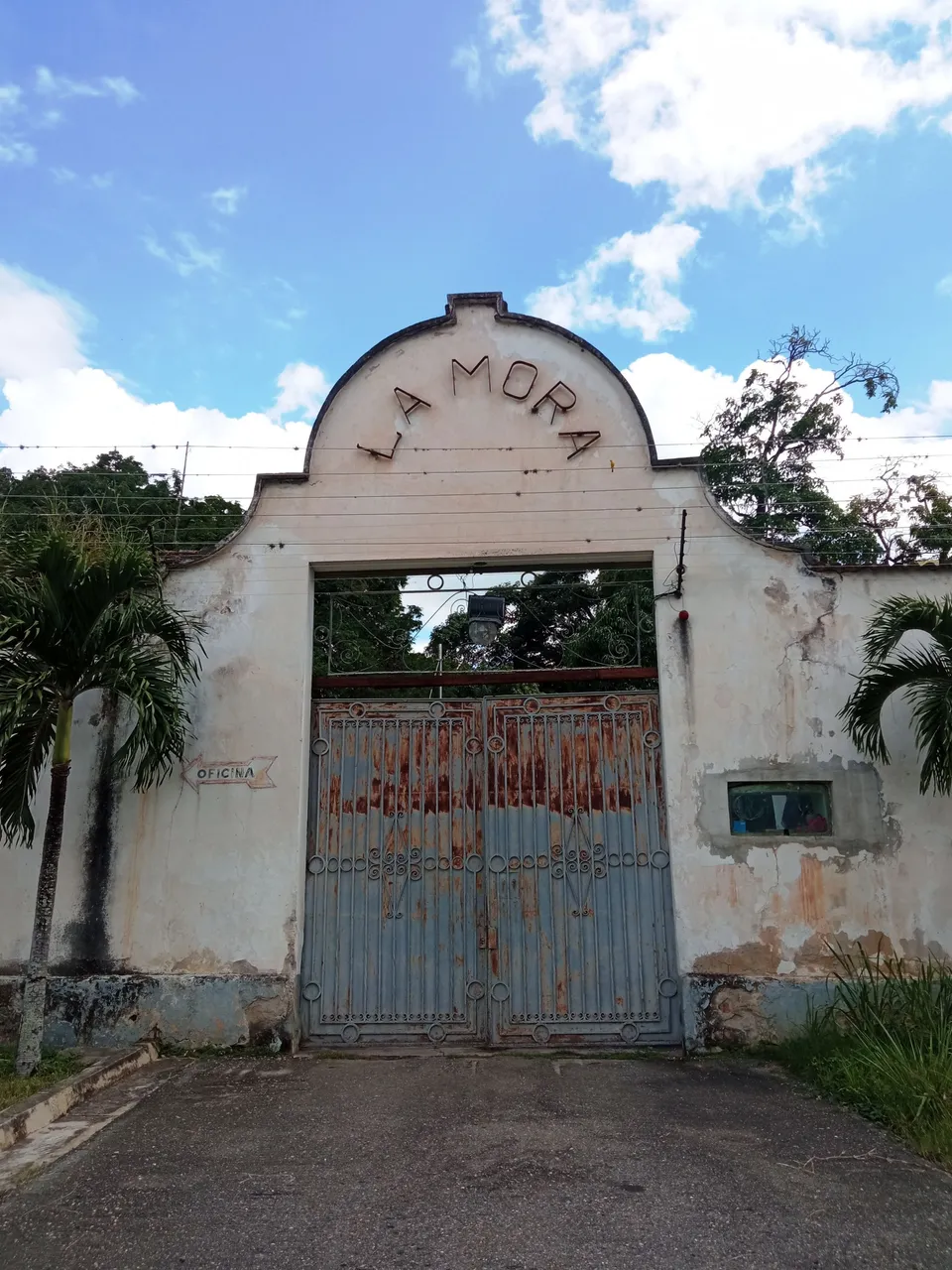
I was concentrating on capturing some details on the walls when suddenly the big gate opened a bit. I didn't see anyone coming out and quickly approached the entrance to peek in, to see what was behind it.
Estaba concentrada capturando algunos detalles de las paredes cuando de repente el gran portón se entreabrió. No vi a nadie salir y rápidamente me acerqué a la entrada para asomarme y ver qué había detrás.
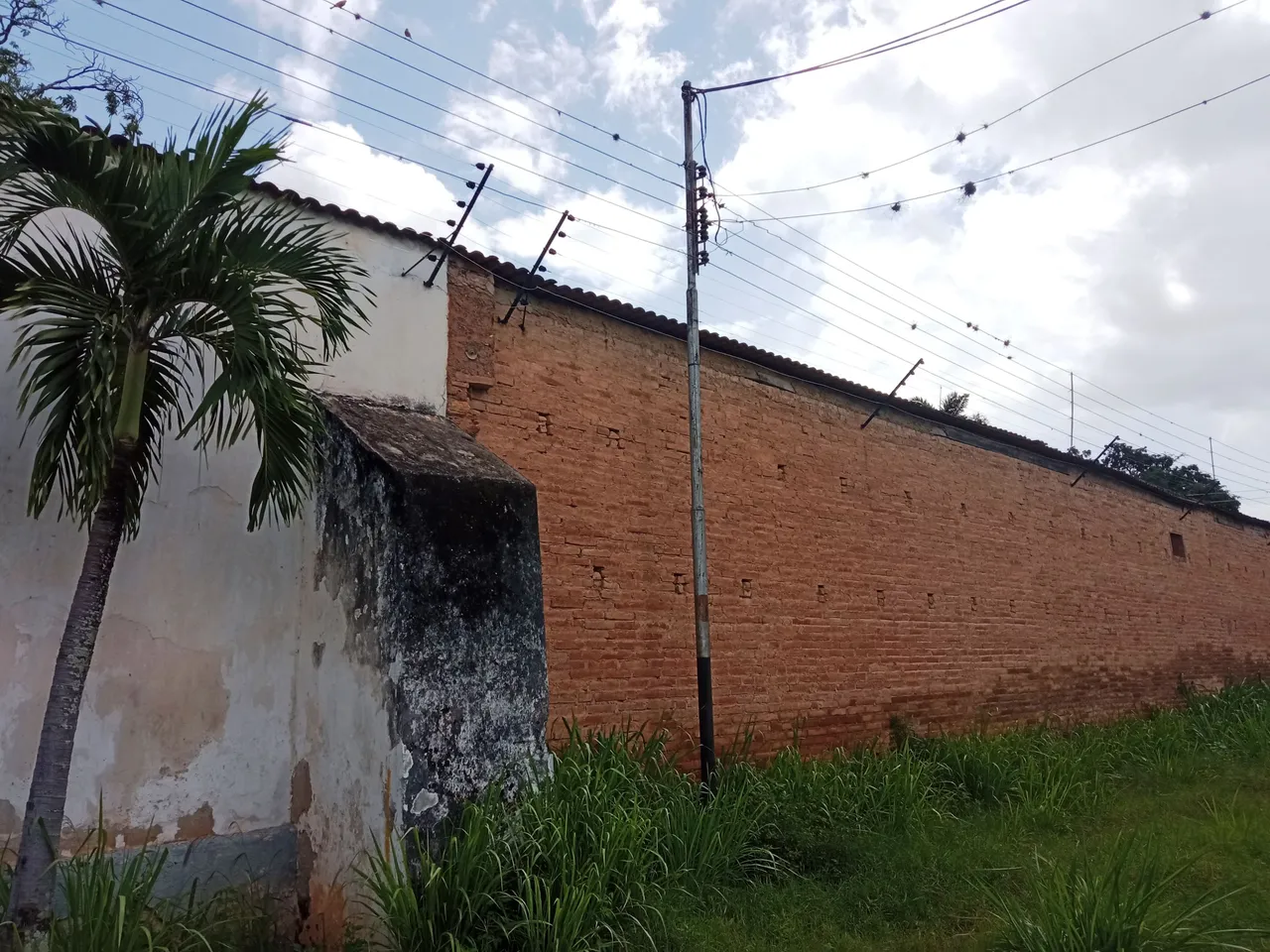
I stood next to the door and said: “good morning”, and heard a male voice: “yes, tell me”, it's not abandoned, I thought. And immediately I saw the opportunity to get information directly from a main source 😄, that's how we journalists are. From the gate came out a gentleman with his palm hat, I asked him if he worked there and he said yes, he was the watchman of the place, then I explained to him that I was doing a research work about old places in the city, and if he could help me by giving me information about the hacienda.
Me paré al lado de la puerta y dije: “buenos días”, y escuché una voz masculina: “sí, dígame”. ¡No está abandonada!, pensé. E inmediatamente vi la oportunidad de obtener información directamente de una fuente principal 😄, así somos los periodistas. Del portón salió un señor con su sombrero de palma, le pregunté si trabajaba allí y me dijo que sí, que era el vigilante del lugar, entonces le expliqué que estaba haciendo un trabajo de investigación sobre lugares antiguos de la ciudad, y que si me podía ayudar dándome información sobre la hacienda.

The watchman was very kind and asked me what I wanted to know, I told him basic information, for example, what year the hacienda was built, what they produced and what was the current situation. He told me that the place was and is owned by the Urdaneta Maya family, it has existed since “1800 and something” and there they produced sugar cane, papelón (sugar cane panela), corn, tobacco, potatoes and raised cattle. While we were talking, someone called him from inside and I took advantage of those seconds he was gone to take a picture of what is behind the old facade: a large colonial style house that looks very well maintained.
El vigilante fue muy amable y me preguntó qué quería saber, le dije que datos básicos, por ejemplo de qué año databa la hacienda, qué producían y cuál era la situación actual. Me contó que el lugar era y es propiedad de la familia Urdaneta Maya, existe desde “1800 y pico” y allí se producía caña de azúcar, papelón, maíz, tabaco, papa y se criaba ganado. Mientras conversábamos, alguien lo llamó desde adentro y aproveché esos segundos que se fue para tomar una foto de lo que está detrás de la vieja fachada: una gran casa de estilo colonial que luce muy bien mantenida.
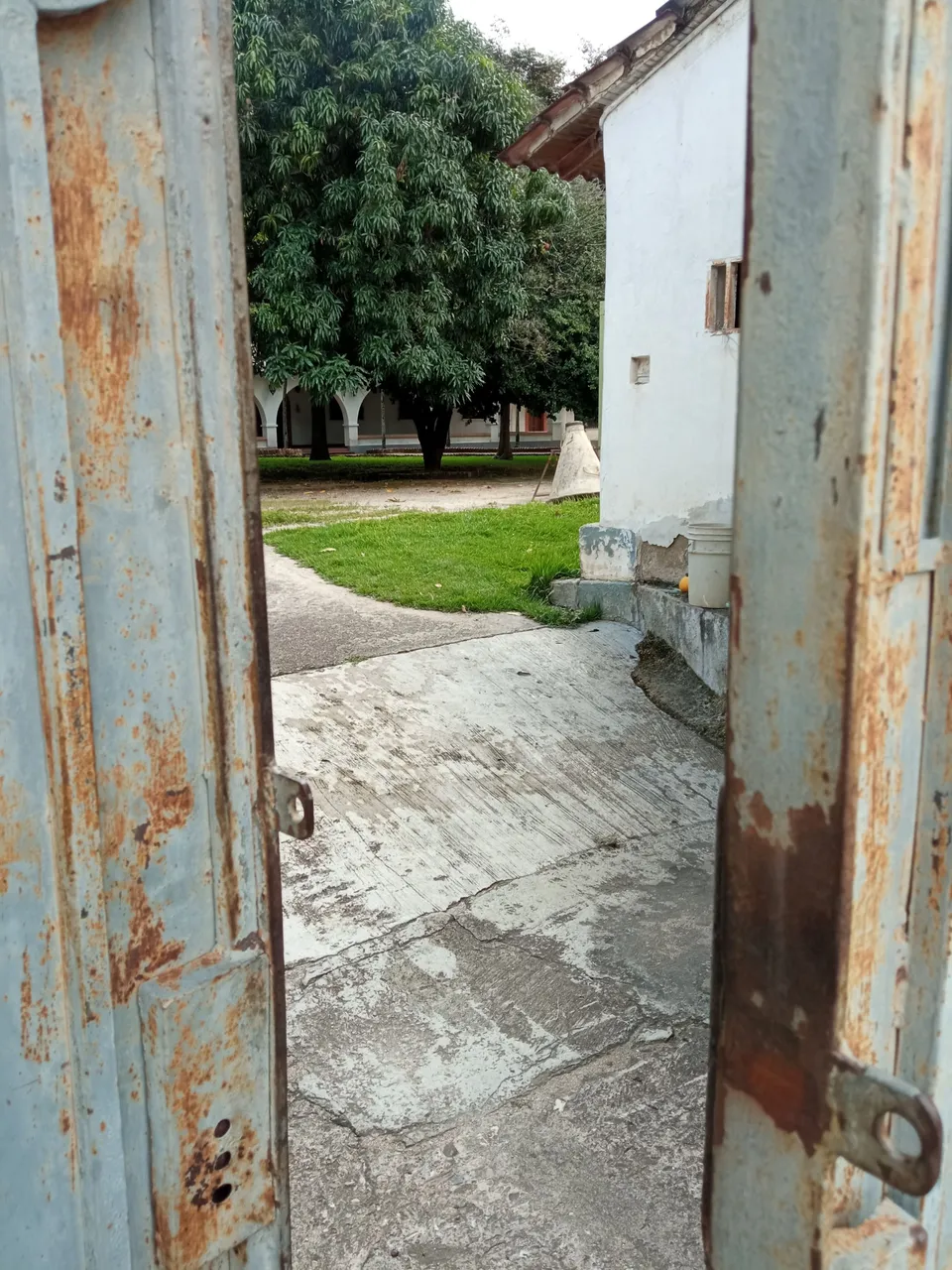
When the gentleman returned we continued talking and he told me that this hacienda was enormous, it covered an extension of thousands of hectares and that the sugar cane plantations reached as far as Guacamaya, an area that is quite far from here. As the years went by and the population grew, the owners sold part of their land to the municipal government, and for example, in what was the hacienda La Mora, part of the urbanization Las Mercedes, the passenger terminal of the city, the Municipal Market, among other works were built. Currently, what remains of this property is only this big house, which has administrative purposes, he told me, because in 2010 approximately, the Venezuelan State expropriated 1,180 hectares of this hacienda to build the housing project Ciudad Socialista La Mora, which I showed you at the beginning, which benefited thousands of low-income families who did not have housing.
Cuando el señor volvió continuamos conversando y me dijo que esta hacienda era enorme, abarcaba una extensión de miles de hectáreas y que las plantaciones de caña de azúcar llegaban hasta Guacamaya, una zona que está bastante lejos de aquí. Con el pasar de los años y el crecimiento de la población, los dueños vendieron parte de sus tierras al gobierno municipal, y por ejemplo, en lo que era la hacienda La Mora, se construyó parte de la urbanización Las Mercedes, el terminal de pasajeros de la ciudad, el Mercado Municipal, entre otras obras. Actualmente, lo que queda de esta propiedad es solamente esta gran casona, que tiene fines administrativos, me contó, porque en el año 2010 aproximadamente, el Estado venezolano expropió 1.180 hectáreas de esta hacienda para construir el proyecto habitacional Ciudad Socialista La Mora, que les mostré al principio, que benefició a miles de familias de escasos recursos que no tenían vivienda.

We were still talking, and suddenly from inside a lady came out and complained to the watchman that why he was talking to strangers, giving information about the house, that they as workers were not authorized by the owners to do that, etc. I tried to calm the lady down, I told her that he was not revealing anything confidential to me, just the history of the place, but she was upset and even told me that she had seen me taking pictures of the facade, to which I replied that I was not committing any crime, that anyone could do that since the view of the facade is public 😃.
Seguíamos conversando, y de repente del interior salió una señora y le reclamó al vigilante que por qué estaba hablando con extraños, dando información de la casa, que ellos como trabajadores no estaban autorizados por los dueños para hacer eso, etc. Traté de calmar a la señora, le dije que no me estaba revelando nada confidencial, sólo la historia del lugar, pero ella estaba molesta e incluso me dijo que me había visto tomando fotos de la fachada, a lo que le respondí que no estaba cometiendo ningún crimen, que cualquiera podía hacerlo ya que la vista de la fachada es pública 😃.
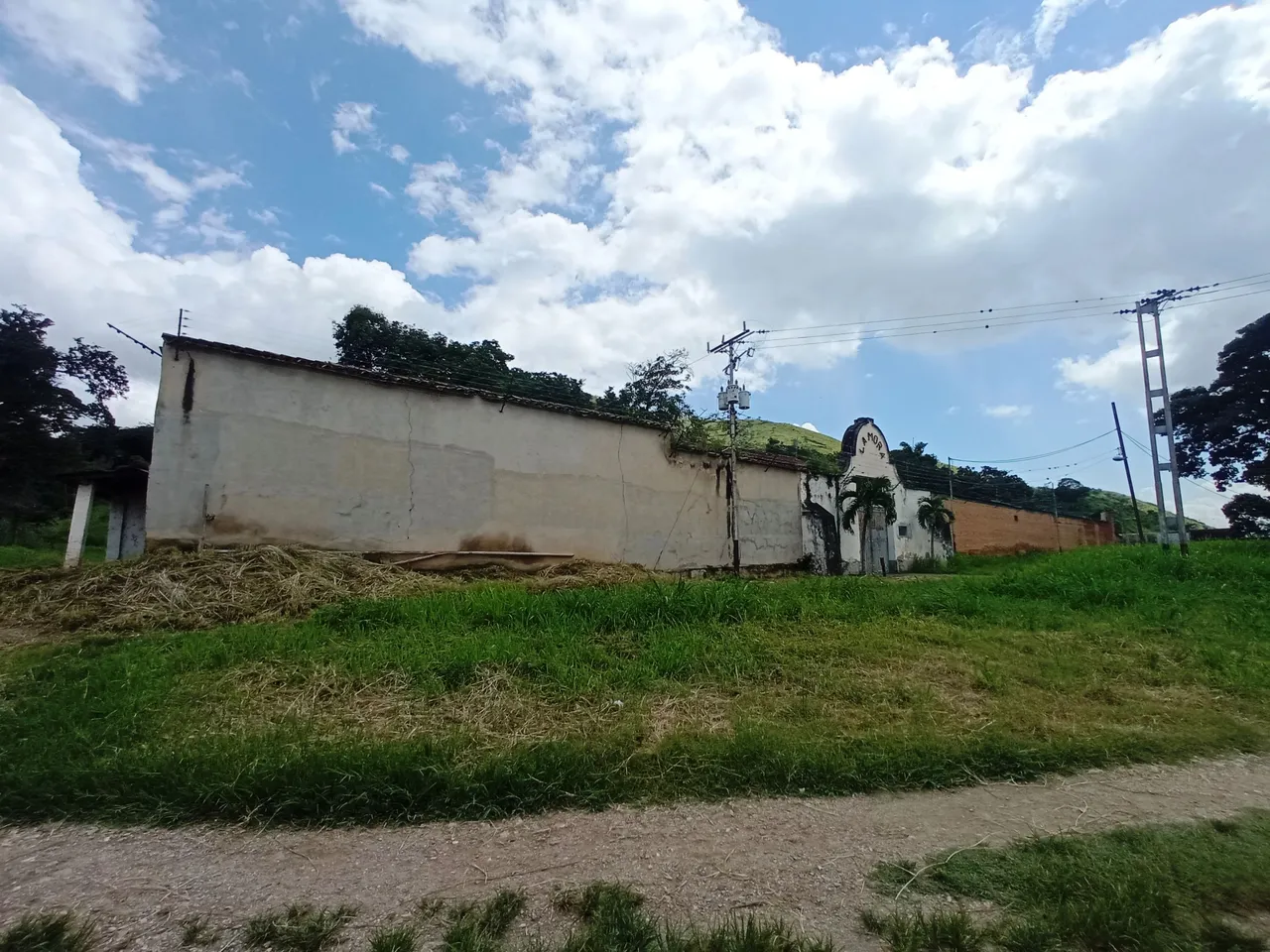
The watchman told her the same thing, that he was only talking to me about the history of the hacienda, anyway to avoid conflicts, I decided to leave, but not before thanking the gentleman for his time and kindness in giving me the information. I walked to the left side of the facade, came to the corner of the structure to take more pictures and from this side it looks to me to be in critical condition.
El vigilante le dijo lo mismo, que sólo me hablaba de la historia de la hacienda, de todos modos para evitar conflictos, decidí irme, no sin antes agradecerle al señor por su tiempo y amabilidad de darme la información. Caminé hacia la parte izquierda de la fachada, llegué a la esquina de la estructura para tomar más fotos y de este lado me parece que está en estado crítico.
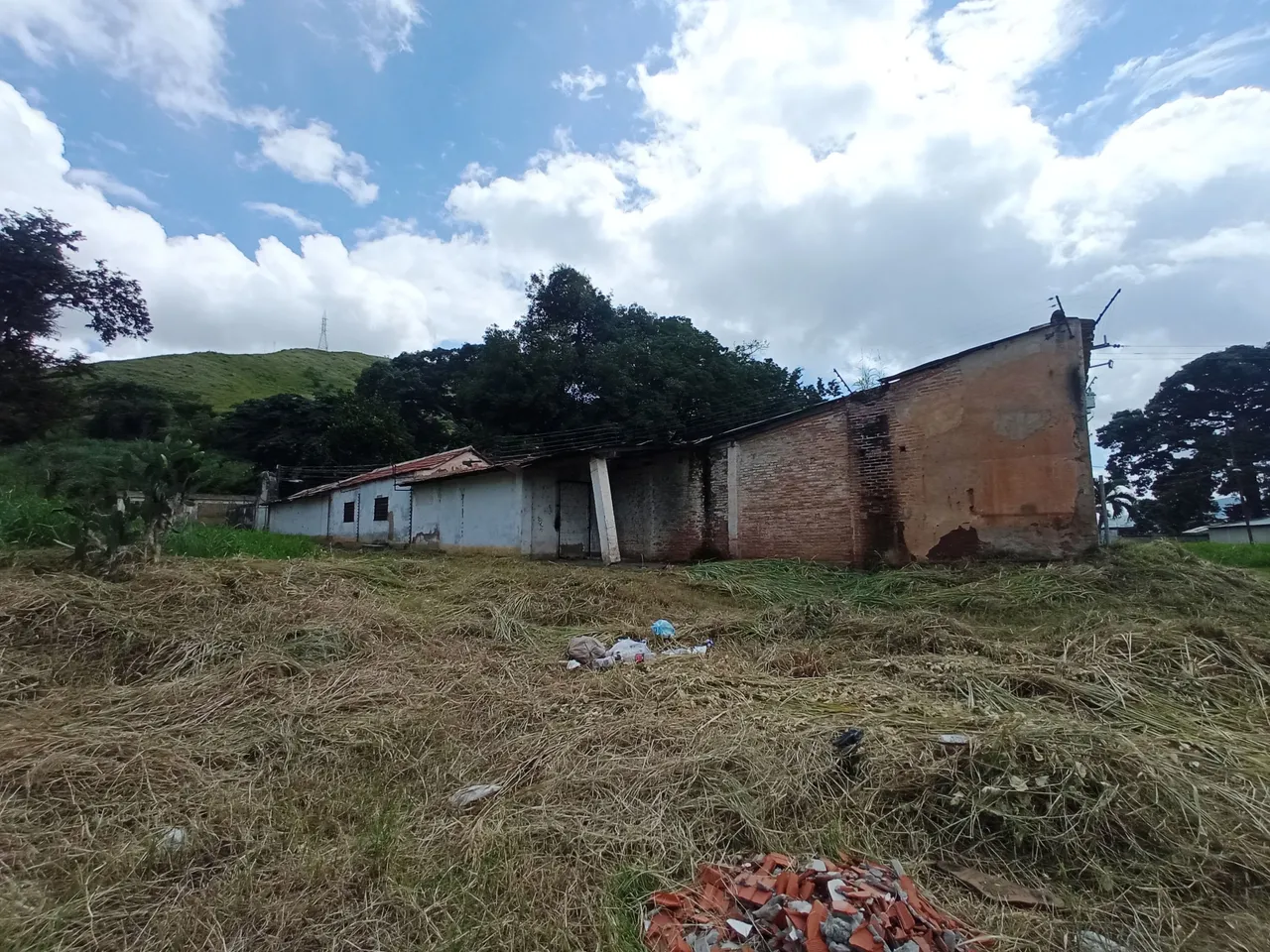
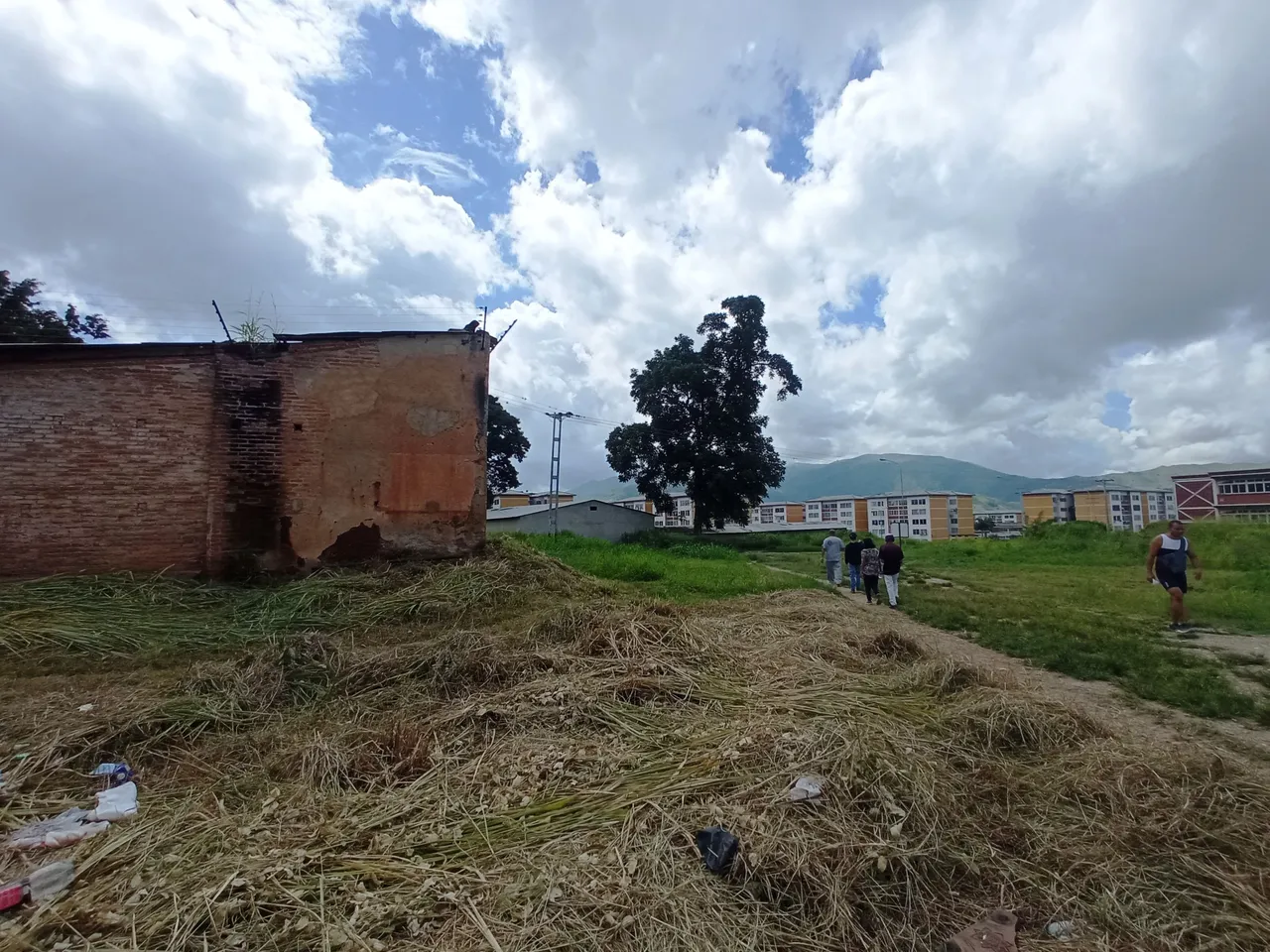
Most of the walls are cracked, showing the materials with which they were built, such as small blocks and mud.
Gran parte de las paredes están resquebrajadas, mostrando los materiales con los que fueron levantadas, como los pequeños bloques y el barro.
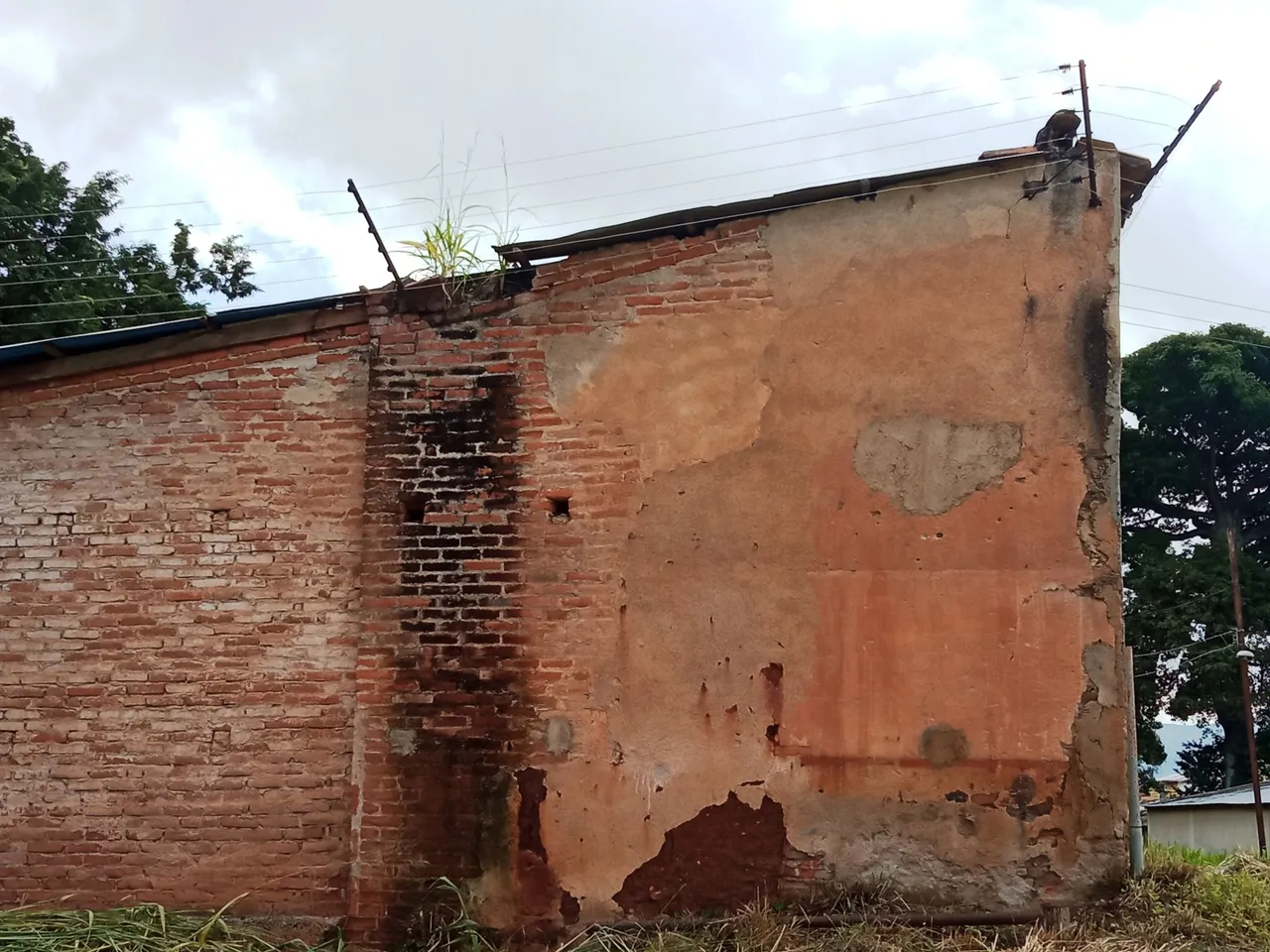
The structure looks pretty unsafe, so I tried to stay away, especially when I saw this bent column, how much more will it hold?
La estructura se ve bastante insegura, así que traté de mantenerme lejos, sobre todo cuando vi esta columna doblada, ¿cuánto más aguantará?
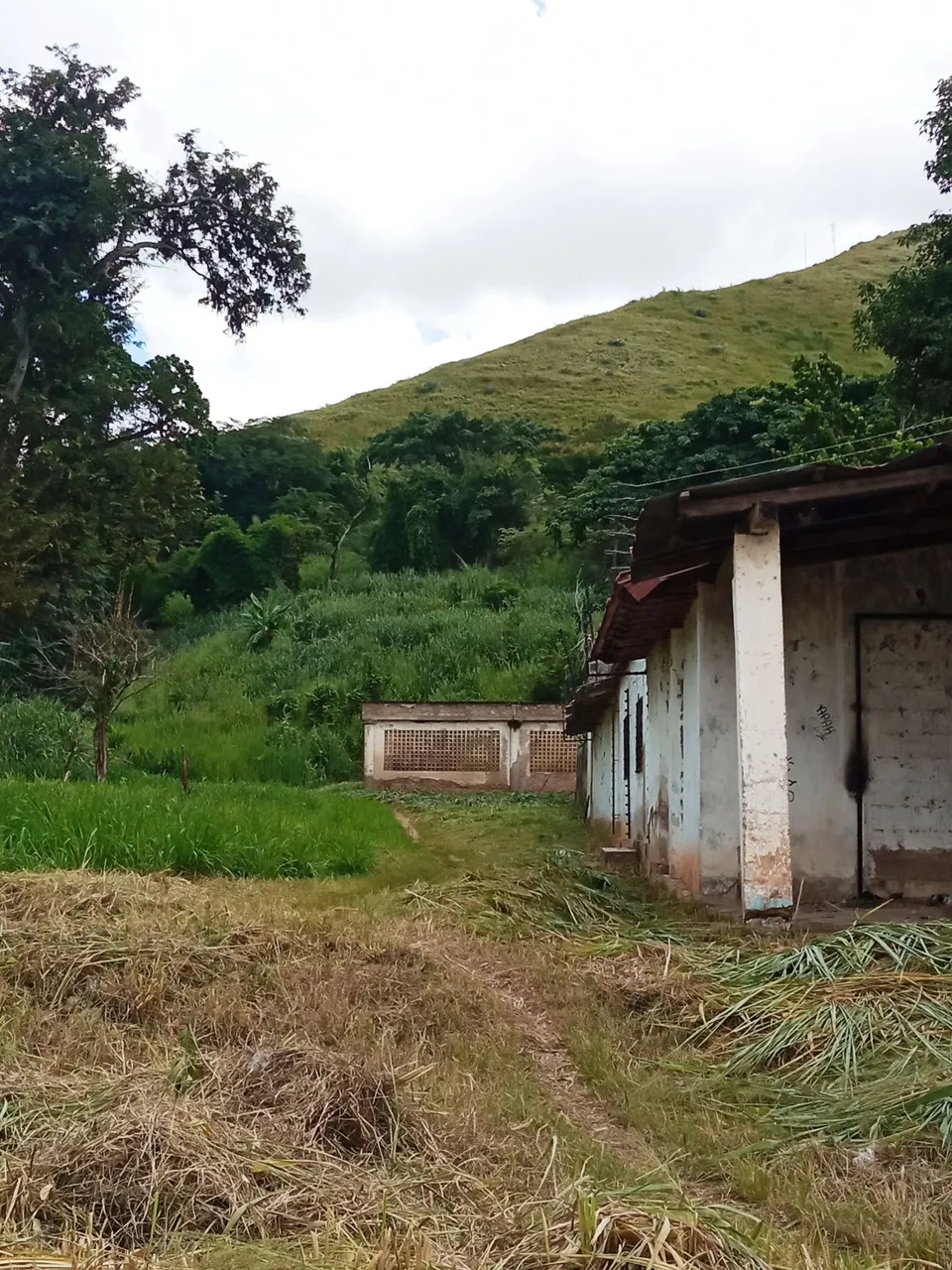
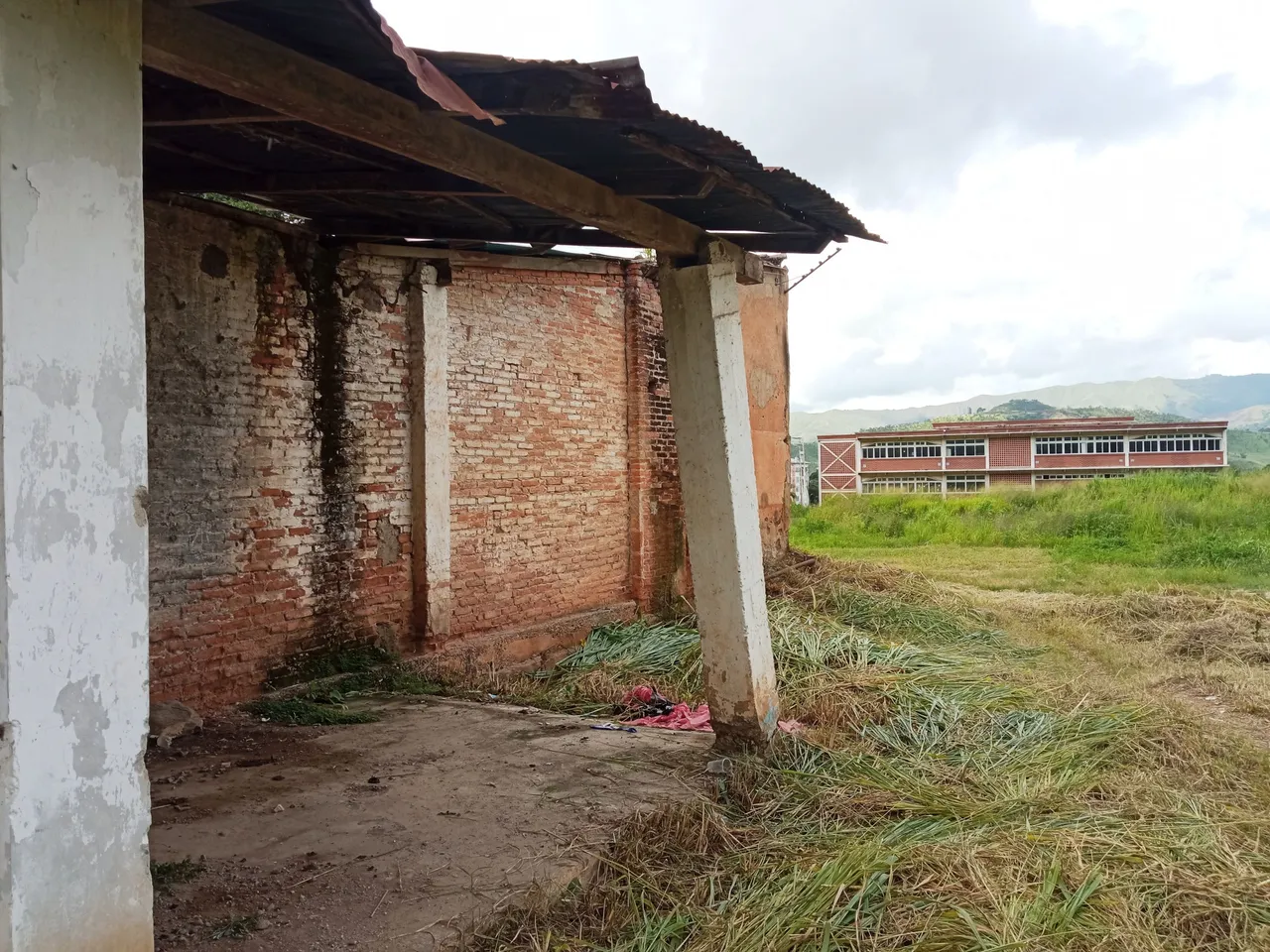

I walked to the bottom, where the wall ends and a small hill begins, and everything looked just as decadent.
Caminé hasta el fondo, donde termina la pared y empieza una pequeña colina, y todo lucía igual de decadente.
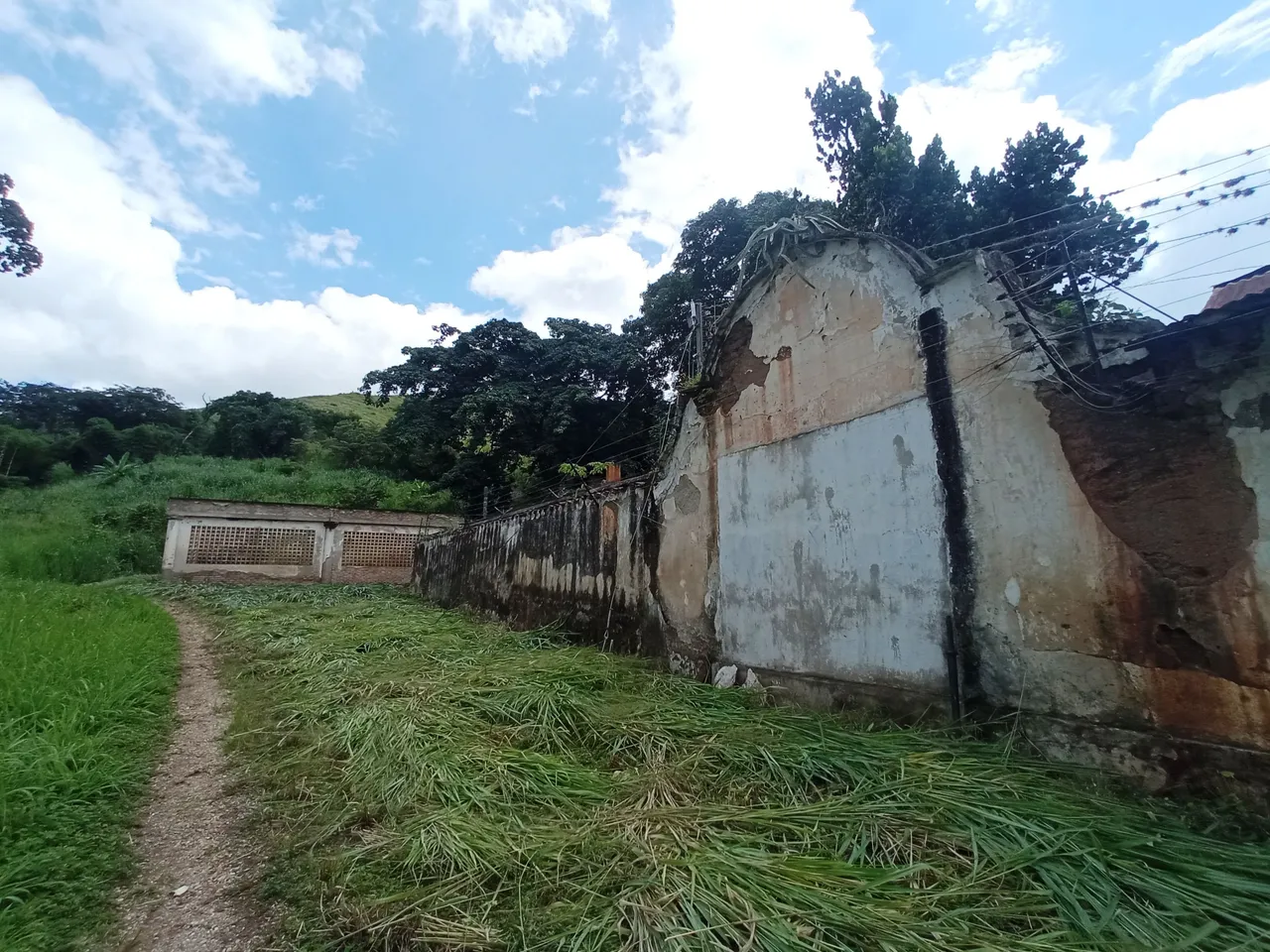
To expand on the information given to me by the watchman, I then searched the Internet, entering the names of the hacienda's owners, and although I found very little, some additional data appeared. The owner of the hacienda La Mora, Enrique Urdaneta Maya, a native of Trujillo State (1870-1928), was a university professor, jurist and politician. In addition to this property, he owned several farms in Aragua state.
Para ampliar la información que me dio el vigilante, busqué luego en Internet, colocando el nombre de los propietarios de la hacienda, y aunque hallé muy poco, aparecieron algunos datos adicionales. El dueño de la hacienda La Mora, Enrique Urdaneta Maya, oriundo del estado Trujillo (1870-1928), fue profesor universitario, jurista y político. Además de esta propiedad, tenía varias fincas en el estado Aragua.

The large amount of land that Urdaneta Maya owned in the region was later considered a large estate, as described by historian and anthropologist Federico Brito Figueroa in his book La estructura económica de Venezuela colonial (The economic structure of colonial Venezuela), 1963 (Caracas, UCV):
“...in the Ricaurte District, Aragua State, Enrique Urdaneta Maya, former secretary of Gómez and buffoon of the Gomecista court due to his senile servility, took over the ejido lands of La Victoria and, on the basis of pressure and threats, the haciendas extending from El Consejo to La Victoria, among others the following: Tiquire Flores, Tiquire Esperanza, Guareima, Guareimita, La Mora and Guacamaya, and integrated these properties into a latifundia where he dominated in terms of gallows and knife, the peons were whipped and kept chained to the land by the system of debts, which passed from one generation to another generation. This latifundia was inherited by the Urdaneta Carrillo Succession and still survives, disintegrated by the industrial development of the Ricaurte District.” Source: El latifundio venezolano en las primeras décadas del siglo XX (The Venezuelan latifundia in the first decades of the twentieth century).
La gran cantidad de tierras que poseía Urdaneta Maya en la región, se consideró posteriormente como un latifundio, así lo describe el historiador y antropólogo Federico Brito Figueroa en su libro La estructura económica de Venezuela colonial, 1963 (Caracas, UCV):
“…en el Distrito Ricaurte, estado Aragua, Enrique Urdaneta Maya, ex secretario de Gómez y bufón de la corte gomecista debido a su senil servilismo, se apoderó de las tierras ejidales de La Victoria y, sobre la base de presión y amenazas, de las haciendas que se extienden desde El Consejo a La Victoria, entre otras las siguientes: Tiquire Flores, Tiquire Esperanza, Guareima, Guareimita, La Mora y Guacamaya, e integró estas propiedades en un latifundio donde dominaba en términos de horca y cuchillo, se azotaba a los peones y se les mantenía encadenados a la tierra por el sistema de deudas, que pasaban de una generación a otra generación. Este latifundio fue heredado por la Sucesión Urdaneta Carrillo y todavía subsiste, desintegrado por el desarrollo industrial del Distrito Ricaurte.” Fuente: El latifundio venezolano en las primeras décadas del siglo XX.
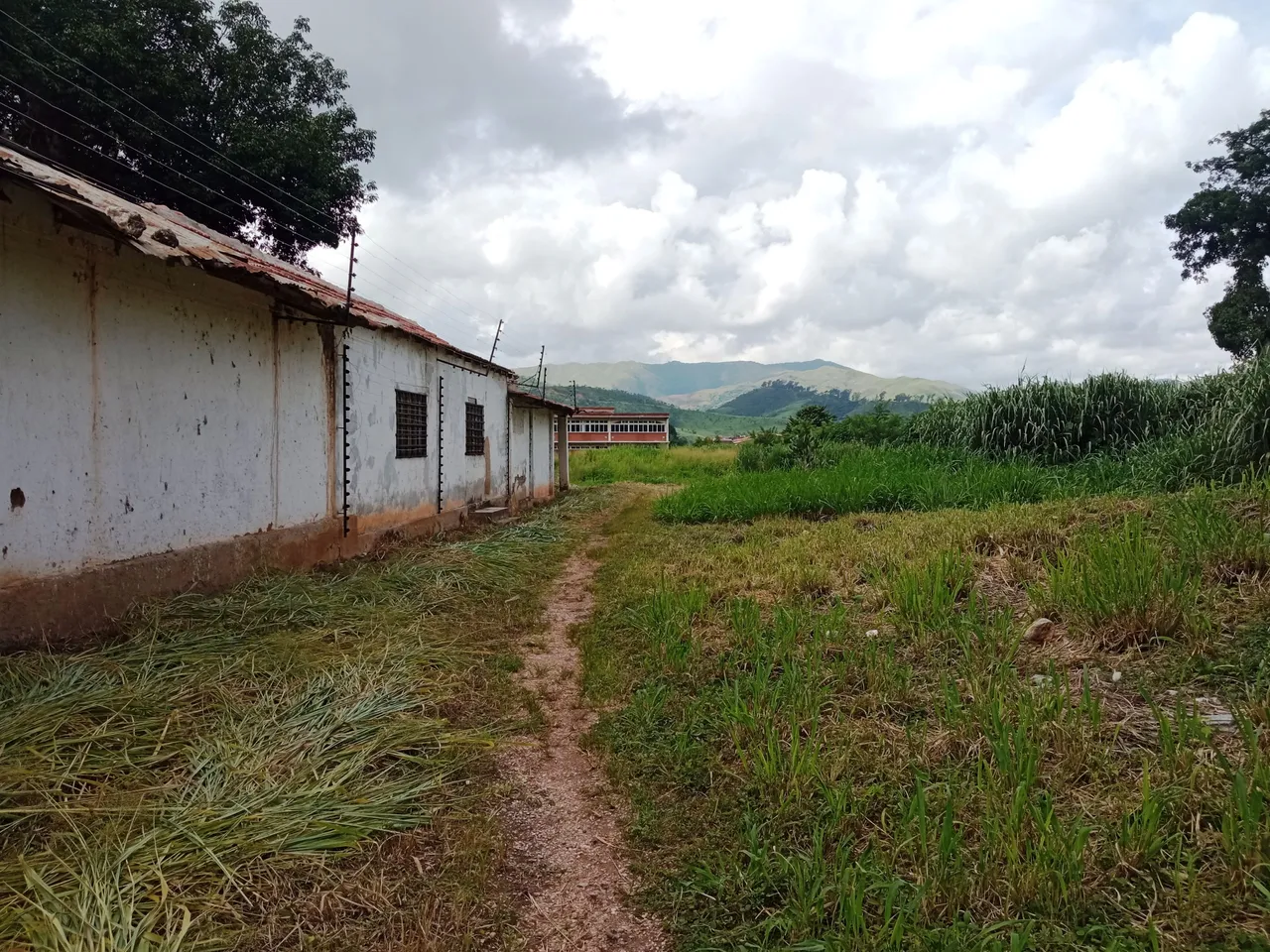
As you can see, quite interesting data on the origin of the ownership of these lands.
Como ven, unos datos bastante interesantes del origen de la propiedad de estas tierras.
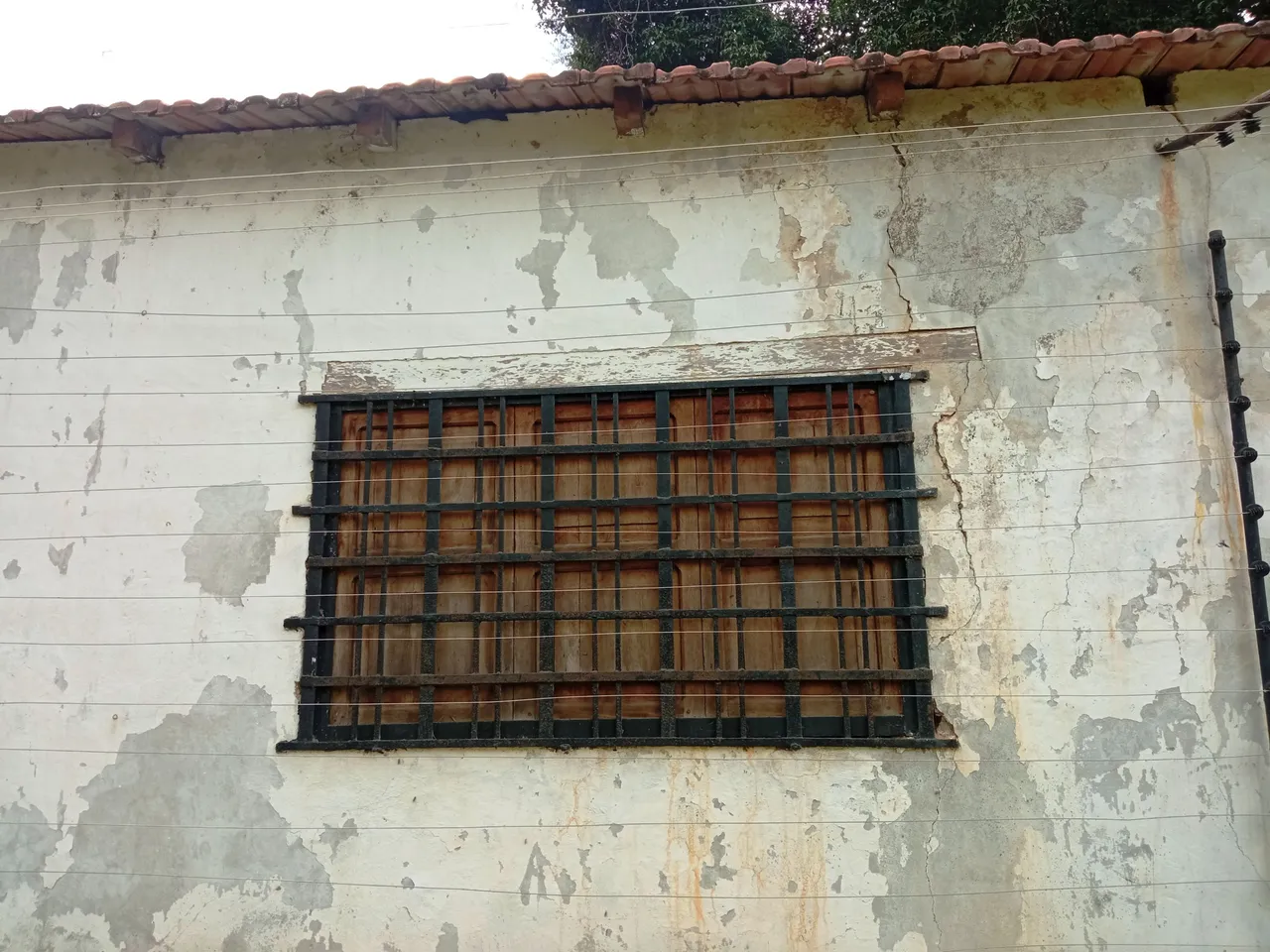
I suppose that since many of these hectares had been unproductive for many years and the organized communities in the area needed a housing solution, the state program Misión Vivienda (Housing Mission) studied the proposal they made and decided to grant this benefit to families without their own home.
Supongo que como gran cantidad de estas hectáreas tenían muchos años improductivas y las comunidades organizadas de la zona necesitaban una solución habitacional, el programa estatal Misión Vivienda, estudió la propuesta que ellas hicieron y decidió otorgar este beneficio a las familias que no tenían casa propia.
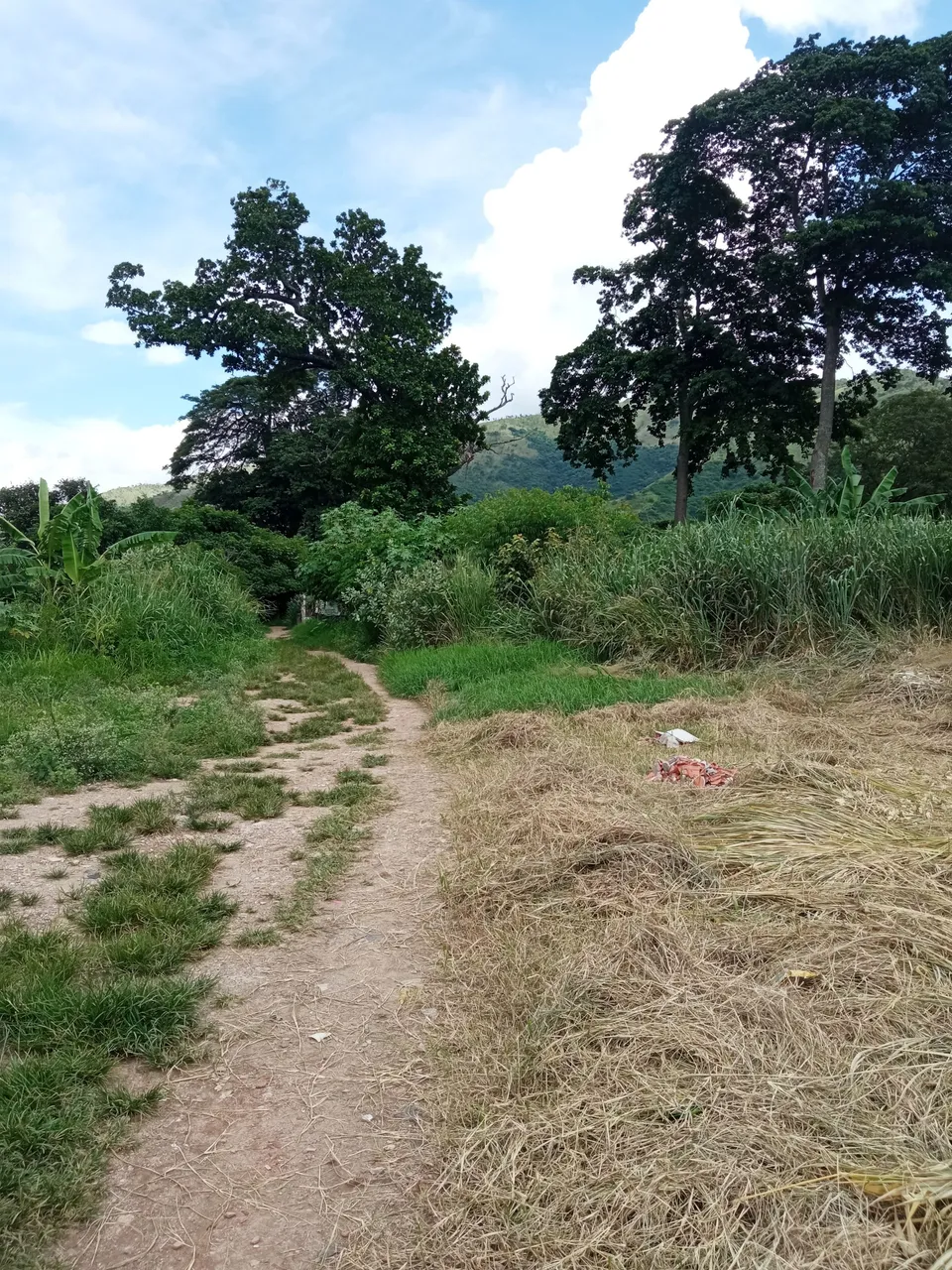
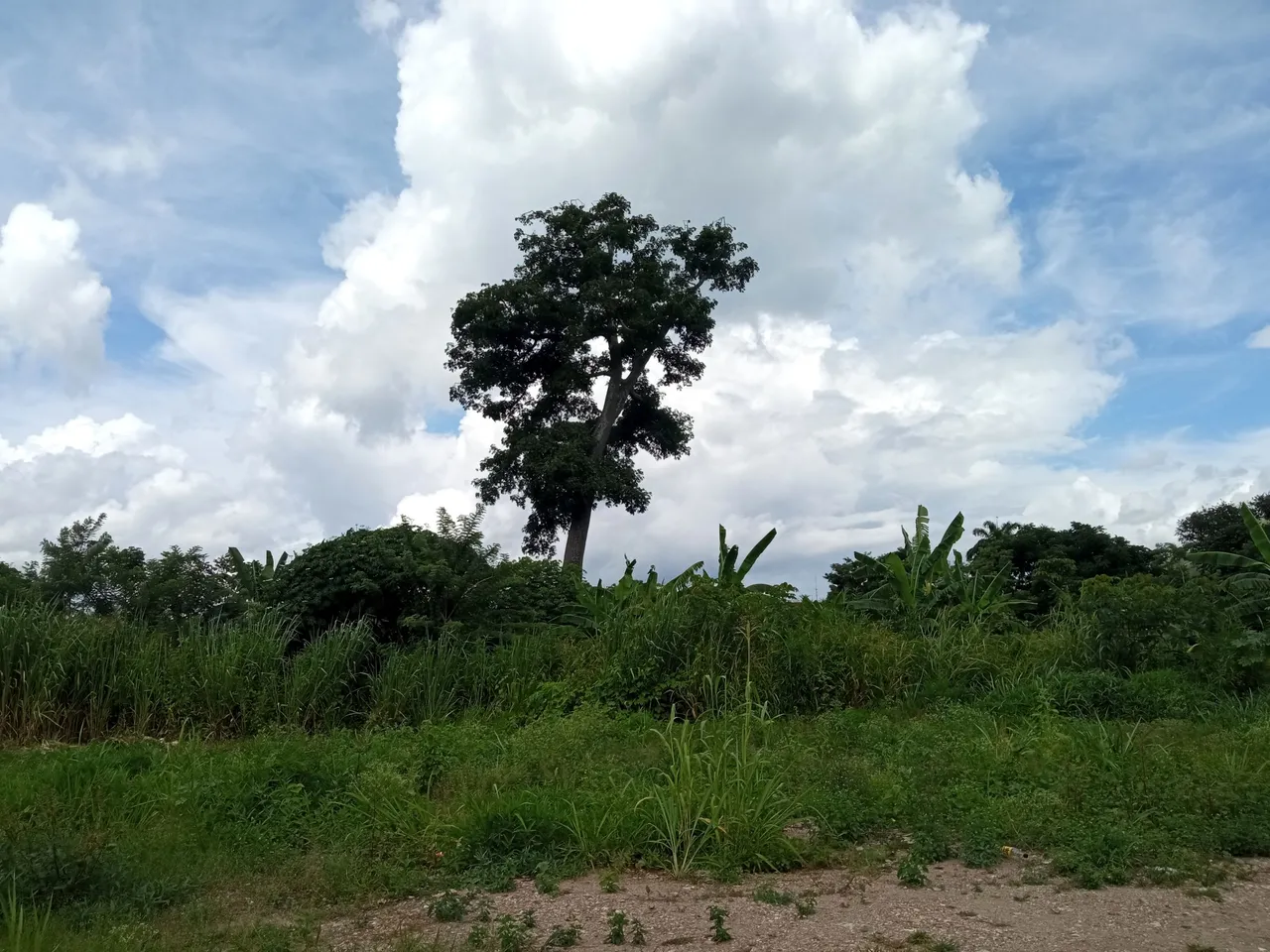
And thus was born Ciudad Socialista La Mora, which currently occupies a large part of the land of the former hacienda, an urban development built through agreements with the Chinese company Citic. Inaugurated in 2013, it has 1820 apartments, preschool, basic schools, high school, ambulatory, among other services for the inhabitants.
Y así nació Ciudad Socialista La Mora, que actualmente ocupa gran parte de los terrenos de la antigua hacienda, un desarrollo urbanístico construido a través de convenios con la empresa china Citic. Inaugurado en 2013, cuenta con 1820 apartamentos, preescolar, escuelas básicas, liceo, ambulatorio, entre otros servicios para los habitantes.
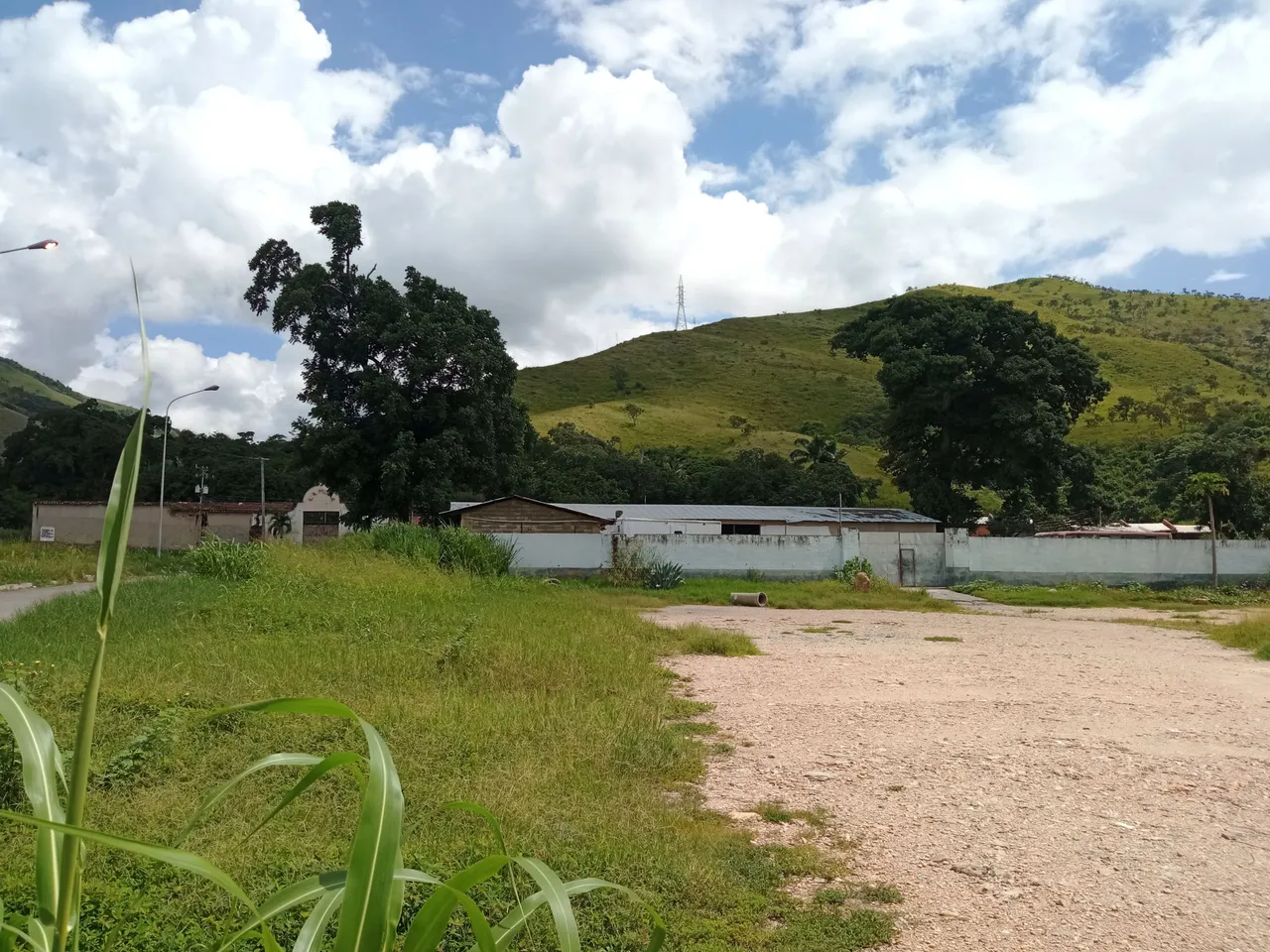
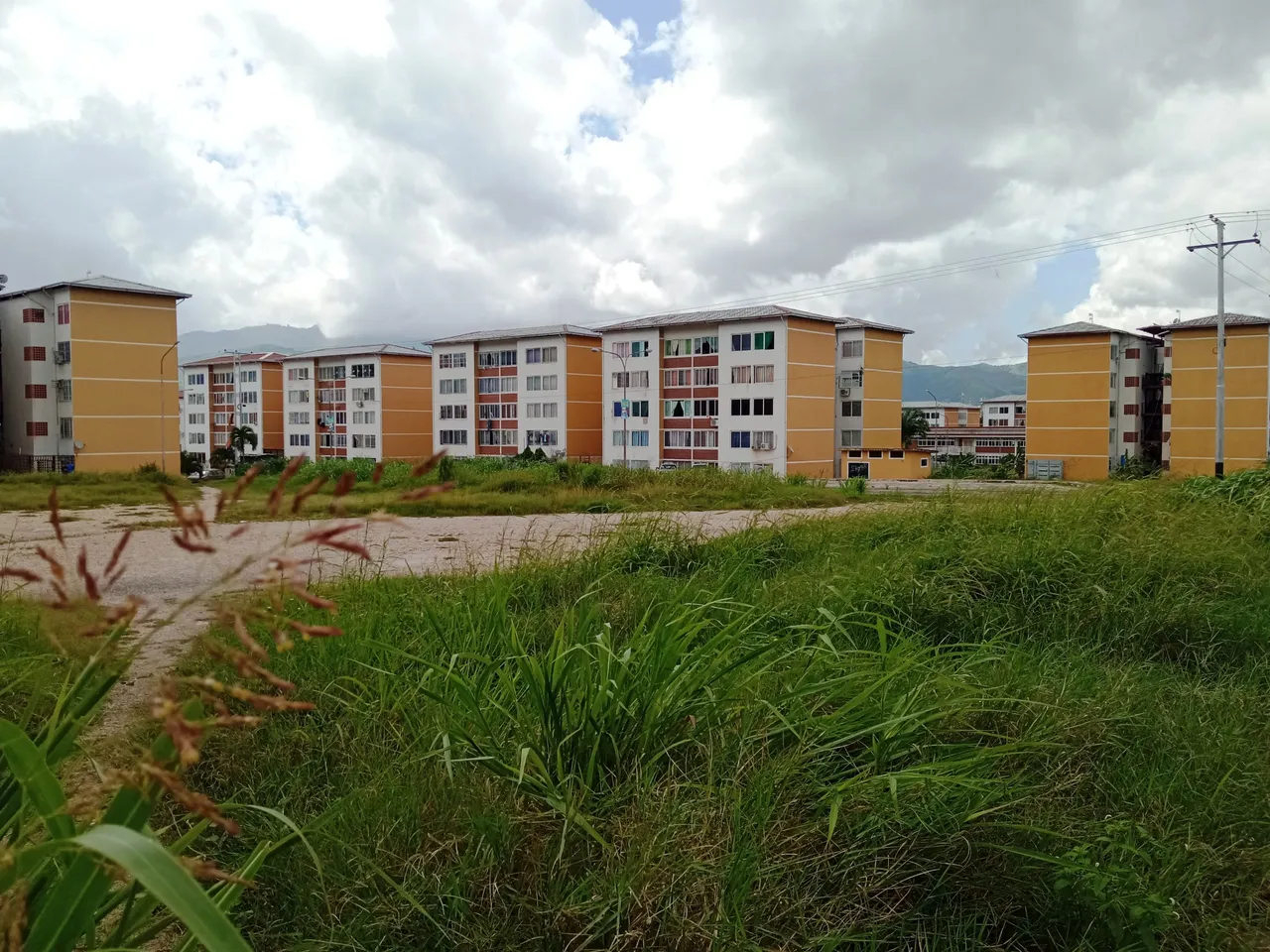
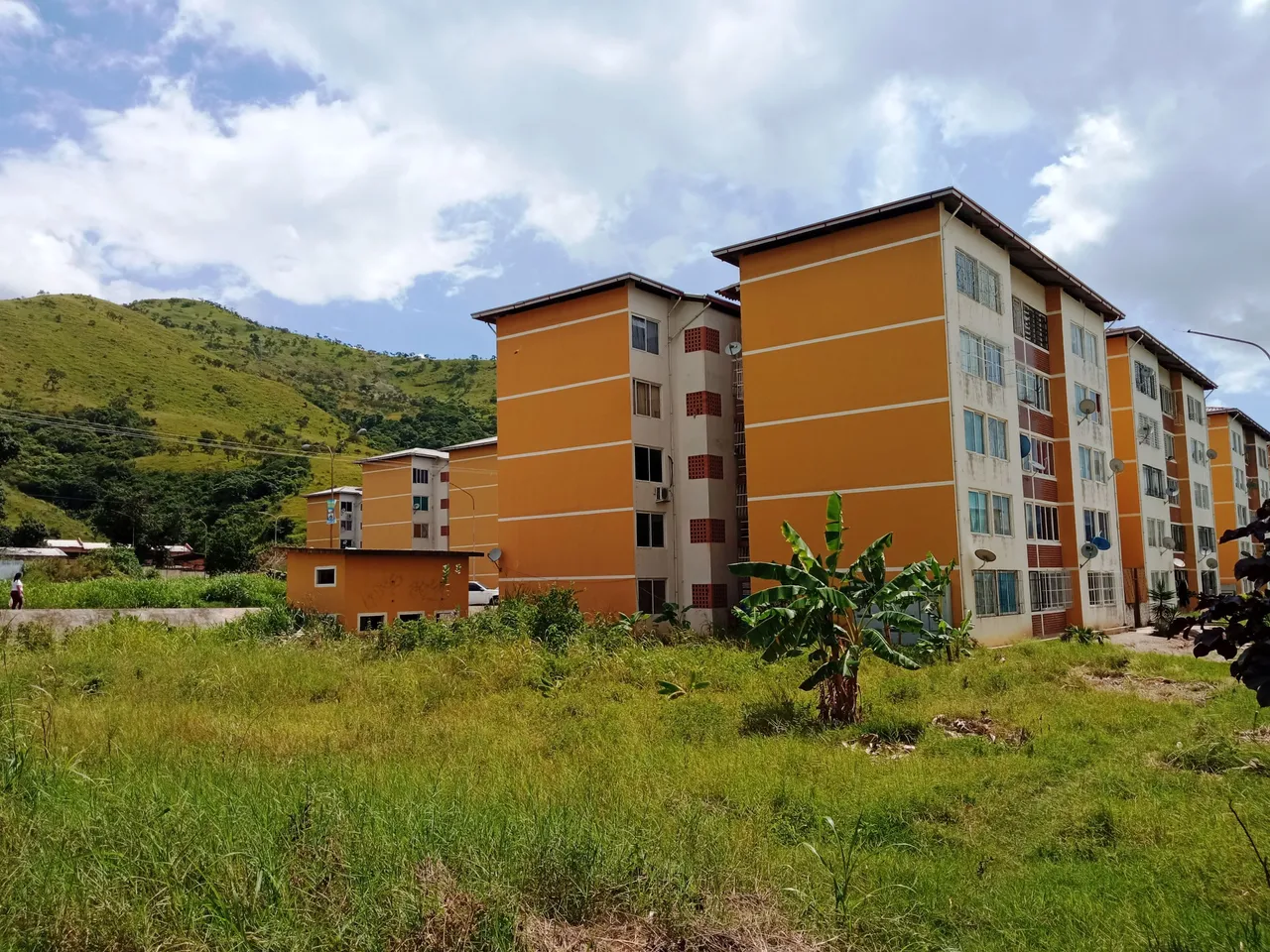
And well, that's how I end this tour, which by the way is my first post in this community 😃. I had been wanting to debut here for a while and I finally had the chance, I hope you found it interesting, see you next time!
Y bueno, así doy por terminado este recorrido, que por cierto es mi primera publicación en esta comunidad 😃. Tenía tiempo queriendo debutar aquí y por fin tuve la oportunidad, espero les haya parecido interesante, ¡hasta la próxima!
All photos are my property and were taken with my Redmi 9 phone / Todas las fotos son de mi propiedad y fueron hechas con mi teléfono Redmi 9
